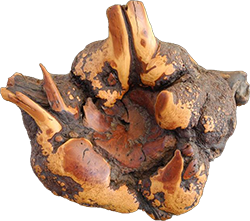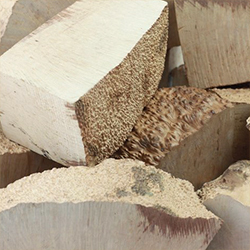Categories WikiBlog Pfeifen_Wiki The Quality Of Briar
The Quality Of Briar
We keep getting questions about how the prices for pipes can vary so much. Of course, the design and the quality of the workmanship play a major role here. But quality is also crucial.
First, the briar needs many years to reach the right size. The harvest is very time-consuming because the plant with the roots that are so valuable to us grows in areas around the Mediterranean that are difficult to access. The wood in the upper edge area of the root is particularly suitable for making pipes. This wood is called plateaux wood.

Up to 50% of the raw material is wasted because the naturally grown root has a lot of larger inclusions, spots and cracks. A flaw in the wood can also show up when it dries. Of this part, only about half is suitable for high-quality pipes.
These are then sorted according to quality levels and built into pipes accordingly. The wood without defects is particularly valuable. These are quite rare. Equally rare is a particularly beautiful, even and dense grain.
Various grain patterns are particularly popular with pipes: Birds Eye (you look at the cross section of the grain), Cross Grain (birds eyes appear on two opposite sides of a pipe bowl), Flame Grain (flame-like grain of the bowl sloping from bottom to top), Straight grain (straight and dense grain on as much surface of the pipe as possible), ring grain (when sandblasting a straight grain, a ring structure is created)
If a pipe has unsightly spots, there are a number of ways to process them well. Spots have no effect on the smoking properties. For example, dark or even black colors are chosen as stains so that these areas are not noticeable. Freehand artists also like to make a virtue out of necessity and such places are artfully rusticated and used as a stylistic element.

There are even sophisticated pipe makers who have the ability to perfectly cut out a suitable briar element from another piece of wood in order to insert it into the ugly spot on the pipe, sometimes even including the matching grain.
Putty is often used in series production. This means that the unsightly areas are filled with a putty and sanded down. After staining, you can no longer see the treated area, but after many smoking processes, putty takes on a different color than wood, which means that the putty can become visible over a longer period of time.
The price of a pipe is therefore a combination of many factors, with the quality and appearance of the wood making a significant contribution.
